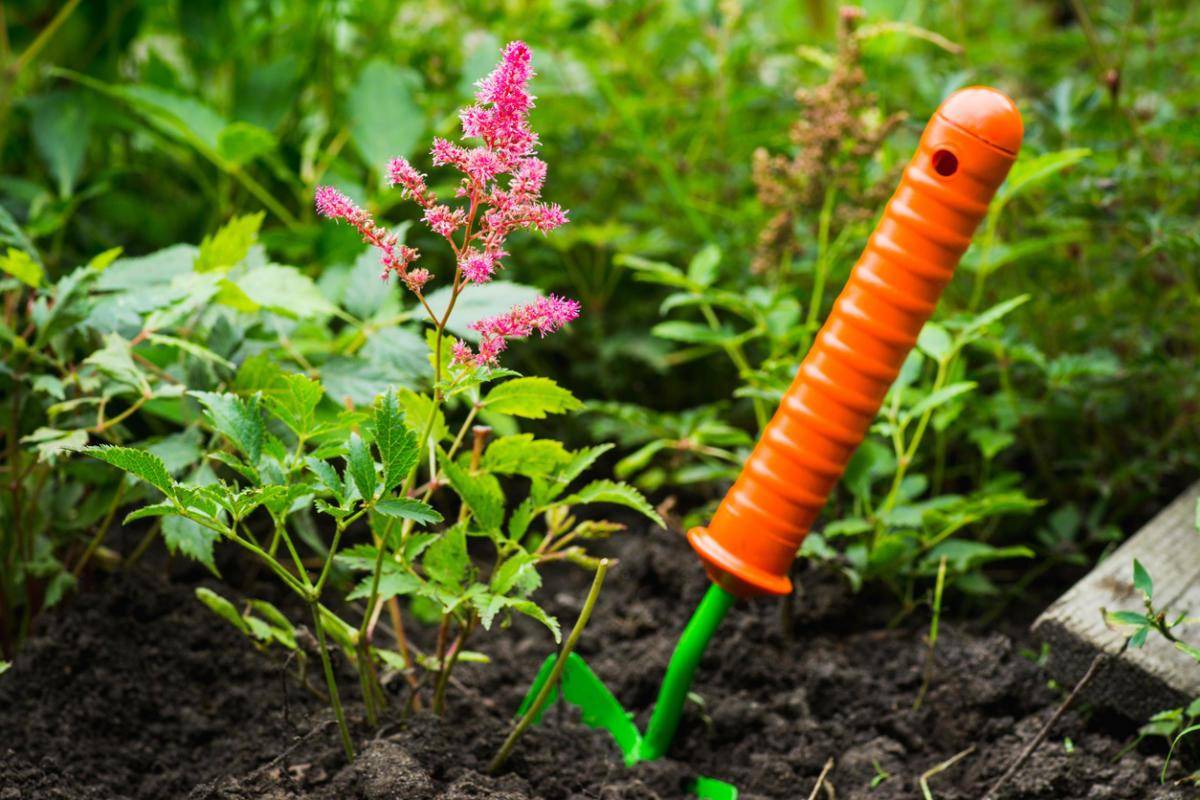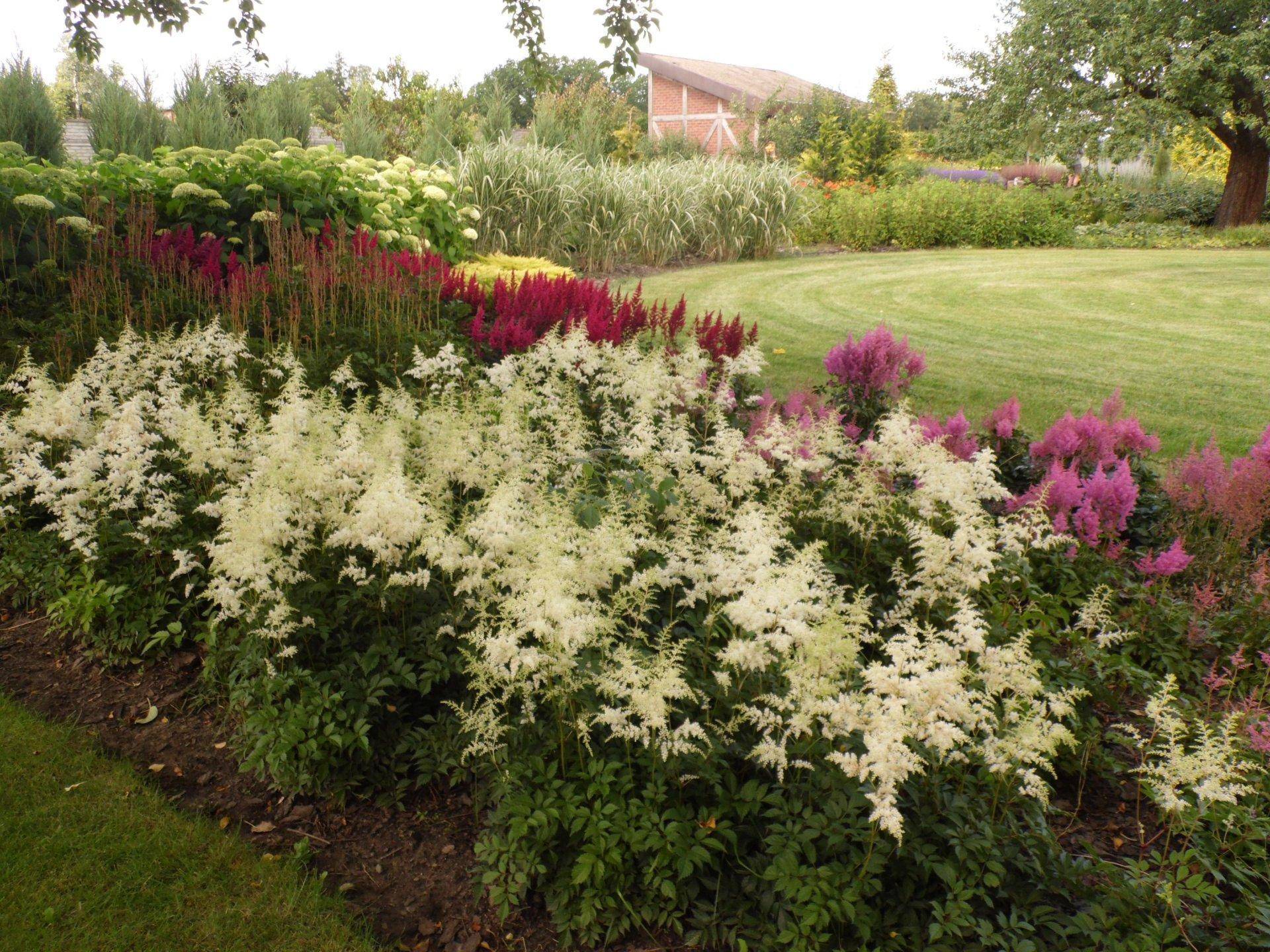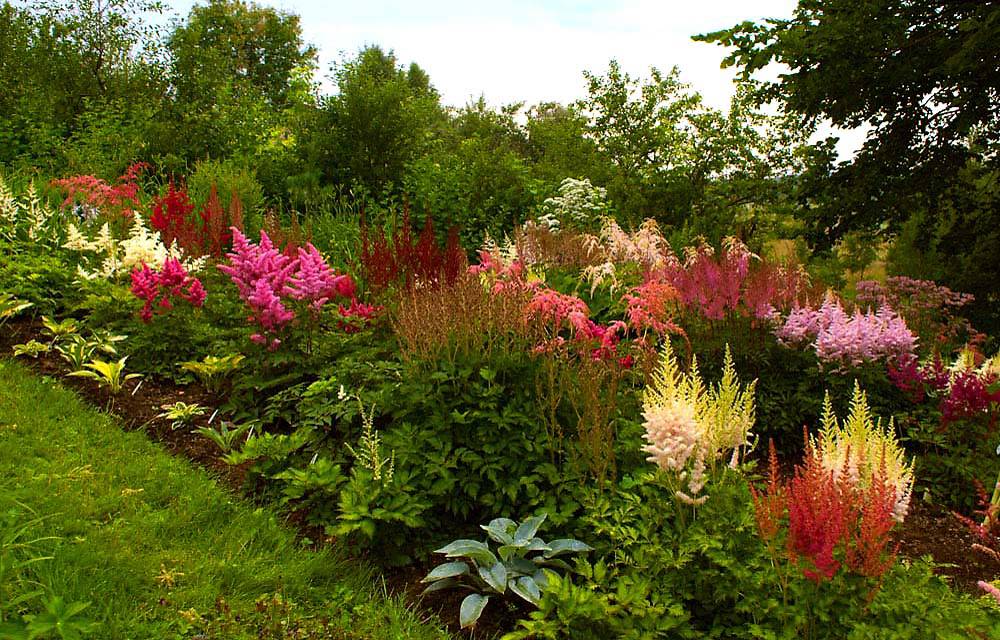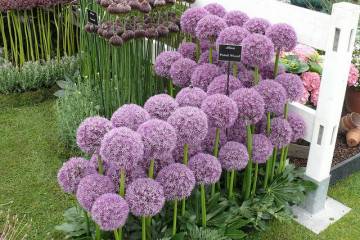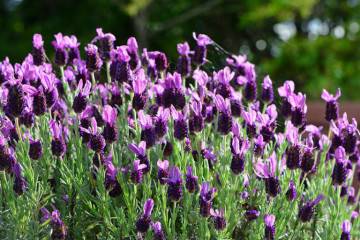Astilba - planting and care in the open field
Content:
A beautiful perennial - astilba in gardens is truly irreplaceable. Her ability to withstand partial shade and even thick shade, as well as a pleasant aroma that lures pollinators - are the most valuable qualities for which gardeners in the Moscow region and not only appreciate her.
Astilba - planting and care in the open field
Flower seeds and seedlings are commercially available, which can be purchased in a container and transplanted directly into a suitable location in the garden. In the open field, perennial winters well, since its frost resistance is -37 ° C. The place is chosen in such a way that in the future it would be easy to add a little soil from above, because the root of Astilbe over the winter, together with the buds of the new year, grows upward.
The varieties on sale can be roughly classified as medium and vigorous. The latter are more resilient and much less sensitive to fluctuations in temperature, moisture and nutrient content in the soil.
Astilba transplant after purchase in open ground
On sale throughout the winter and early spring, it is easy to find Astilba rhizomes. When buying, you should pay attention to the name of the variety and the following signs:
- The root should be dormant, without any pale overgrown shoots.
- The rhizome is elastic to the touch, without soil, not too dry, without traces of rot, not wrinkled.
- Growth points should be clearly visible.
As well as the roots, astilbe seedlings grown on a windowsill or bought in a nursery are planted in open ground in May. They are guided by weather conditions. A good day is cloudy, when the soil warms up to a temperature above +12 ° C.
What is needed for landing
It is necessary to prepare a seat. The most important thing is to remove from the soil all weeds and their roots, which can prevent astilbe from taking root.
The composition of the soil is of no fundamental importance, since in almost any flower it will grow well. He especially likes loams and fertile soil, saturated with potassium-phosphorus additives. If the soil is acidic, then wood ash or dolomite flour is added to it.
Choosing the best place
The landing site should be chosen in the northern or western part of the site, you can close to the walls of the building. Preference is given to shaded corners, as well as areas near the reservoir. Only a few early-flowering astilba varieties prefer a sunny location, and most are comfortable in the shade.
To the question of why astilbe grows poorly, the answer may be: the location was poorly chosen. You can plant a flower under tall trees, as well as between different buildings, without fear of too strong shading. Ferns and hosts are good neighbors. Their leaves combine beautifully and the growing conditions are very similar.
Step-by-step planting process
In May, adult seedlings are planted in a permanent, pre-prepared place in this order:
- A hole is dug under each bush about 30 cm deep. The same distance is left between the plants, even more is possible. The trenching method is not suitable for this plant, as the distance between the bushes is too great.
- A handful of wood ash and 50 g of superphosphate are thrown to the bottom.
- Each hole is watered abundantly in order to properly moisten its bottom.
- The plant is lowered with roots into a hole, deepening them about 5 cm from the surface of the soil.
- Cover the roots with soil, compacting a little.
- Water abundantly.
- Sprinkle the soil with peat or humus mulch.
Reproduction of astilba
Mature plants can propagate by dividing the bush or by cuttings. Seedlings are grown from seeds, which will not give the maximum of their potential in the first year. Lush bloom usually appears only in the second year.
Propagation by cuttings of astilba
The rhizome is an elongated long formation, from which thin roots extend downward, and in the upper part there are many vegetative buds. A stalk is a piece of rhizome with 4 (minimum) such buds. Cuttings are traditionally carried out in the spring, when the soil melts.
When to transplant astilba: 8-10-year-old plants are ideal, which did not show any alarming signs last summer, i.e. fungal diseases, rot, etc. Each stalk, after preventive disinfection with fungicides, is planted at a distance of at least 30 cm from the others, digging in the buds to a depth of 5 cm.
Growing from astilba seeds
This method has one important drawback. Seeds harvested from a beautiful lush bush do not always produce identical plants. The shade of flowers, splendor of brushes, sizes may differ. For this reason, the most valuable varieties and hybrids are propagated only vegetatively: by cuttings and roots.
Seeds must be stratified before sowing. To do this, they are placed in wet sand and kept in a refrigerator at + 4 ° C throughout the winter. In March, they are taken out and sown for seedlings. If the seedlings appear already in the refrigerator, that's good!
Seedlings are placed on a light windowsill. The optimum temperature is +20 ° C. The container should be as small as possible and with a pallet through which watering is carried out. The pick is carried out at the stage of 3 true leaves. Until May, the seedlings planted in individual cups should grow a sufficiently lush root and leaf mass.
Dividing the astilba bush
Bushes older than 4 years can be subjected to this procedure in the country. To do this, they are dug out in spring or late autumn, and then the rhizome is cut with a sharp knife into 2-3 parts. Each part must be planted at a distance of at least 25-30 cm from the others.
If the division of the bush is carried out in the fall, then the parts of the rhizome are not immediately planted in a new place, but removed to a cool basement until spring. To do this, they are placed in a box of sand, covered with sphagnum or peat on top. Throughout the winter, periodically you need to visit and water the rhizomes so that they do not dry out.
Planting in a new place is carried out in the spring before the buds begin to grow. If the attempt to propagate the bush was successful, then this summer each division will give lush flowers.
Astilba: care
Properly caring for this rather unpretentious plant, you can not be afraid of any unpleasant surprises on its part. Every year the thickets will only become thicker, and the flowers - more magnificent.
Watering mode
The flower is very fond of watering. Its ideal habitat is shade with moist, even damp, loose soil. Drought and scorching sun are harmful and cause yellowing.Lack of moisture is the main reason why Astilba leaves curl and dry.
In summer, the optimal watering regime is twice a day - very early in the morning and after sunset. Only in this case will the plant be able to form full-fledged beautiful inflorescences that will not dry out prematurely.
Top dressing
Throughout the warm season, regular fertilizing with complex fertilizers is needed. Why does not astilba bloom? She lacks food. Superphosphate, which is introduced into the soil in early spring, at the rate of 30 g per 1 m2, is better than others.
In the middle of summer, planting is watered with a solution of potassium nitrate (2 tbsp. L. Dissolve in 10 liters of water). The last fertilizing with mineral fertilizers is carried out at the end of flowering. If superphosphate is used, then 20 g per 1 m2 will be required.
When choosing how to feed astilba, do not forget about the need to enrich the soil with organic matter. Humus, rotted manure, peat are suitable. They are poured over the roots in the fall, when the withered ground part is cut off. The optimum thickness of such a powder is 5 cm.
Features of care during the flowering period
As the flower stalks fade and wither, the gardener has a choice: remove them or leave them. If left, many seeds will ripen inside the boxes. Cutting off wilted panicles will allow the remaining ones to bloom longer, since the plant will not waste energy on ripening the seeds.
Many gardeners leave inflorescences without cutting until late autumn, since they do not lose their decorative effect in this case. If they are cut for bouquets, then they do it in a half-open state, so that they stand in the vase longer. The edge is constantly pinched.
Features of care during the rest period
In the open field, astilba does not require any special measures in rest mode. But gardeners have the opportunity to speed up its flowering next year if there is a greenhouse. In the fall, the rhizome, preparing for dormancy, is dug up and planted with a lump of earth in a container of a suitable size. Cover with peat on top and leave in a greenhouse at a temperature of +1 ° C.
In February, the pots are transferred to a warmer place and left at a temperature of + 10-12 ° C. As soon as a few leaves grow, the temperature is raised by a couple more degrees, and the bushes themselves shade. Watering at this time should be done regularly, but not fertilized.
Preparing for winter
If the winter is with little snow, the roots may freeze out. Therefore, traditionally, before the onset of frost, the withered ground part is cut to the root, leaving petioles no more than 10 cm long, and then the soil above the roots is sprinkled with a layer of mulch from peat or humus, and covered with spruce branches in several layers on top. These measures will allow you not to be afraid of even the most severe frosts and winds. As soon as the soil warms up to the desired temperature, the flower will wake up and start growing.
Astilba: planting and care in the open field in the Urals
Given the climatic conditions of the Urals, during the entire flowering season, it is important to monitor the peduncles and prevent seeds from ripening, removing wilted areas in time. This simple measure will allow the plant to devote all its strength to laying new buds, which will start to grow in the spring of next year.
Shelter in winter is required for young plants. Older bushes (from 4-5 years old) are no longer so sensitive to frost, they can overwinter without additional measures. In any case, sprinkling from autumn on top of planting soil mixed with humus, as well as mulch from chopped straw, crushed bark, in extreme cases expanded clay - will only benefit the flower.
If there is a possibility of frost below -37 ° C, then the landings will definitely need reinforced shelter. On top of perennial bushes covered with mulch, arcs are installed, between which dry foliage is poured. Lutrasil or spandbond panels are pulled over. Leave them until May.If the buds wake up earlier, then the foliage will not stop them growing, and there will be no threat of freezing.
Astilba: planting and care outdoors in Siberia
Siberian climatic conditions during the warm season are as close as possible to those that best suit the flower. It is not threatened by the scorching sun, and regular rains help limit watering only on the hottest days. If the weather is cloudy, then there is no need to water at all, because soaking the roots is just as undesirable as drying them out.
As in the Urals, in Siberia it is necessary to provide a sufficient layer of mulch over the roots of astilba during the warm season. In the fall, you need to update it and add a shelter. Arches are used, which are covered with agricultural canvas. Drifts should form on top of them. Instead of such shelters, you can use spruce branches, which are piled on top, like a hut.
Astilba occupies a very grateful position in landscape design. It is filled with all kinds of "backdrops". If you need to hide a not too beautiful wall, and other plants will not take root in such a shade, then the choice in favor of this flower is completely justified. It will grow every year, making the most unassuming corners of the garden more beautiful, and caring for astilbe is not difficult at all.



